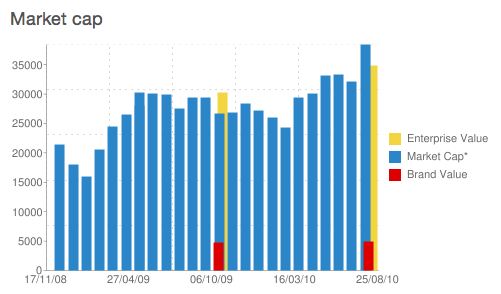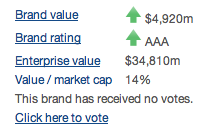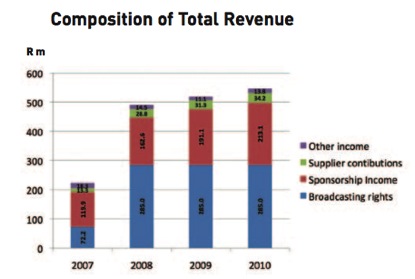Recent developments relating to Bafana Bafana’s naming rights inspired this post. While researching the material for the post, some issues were clarified, and I also discovered great insights that are shared in the content here below. I hope you find it to be as engaging as I do.
CONTROVERSY AROUND THE NAME
Bafana Bafana, name of the South African senior national soccer squad that was coined by some Sowetan journos in 1992, sparked a national debate leading up to 2010 Fifa World Cup. Even the former President, Thabo Mbeki, felt that it does not befit a national team that was going to be hosting the biggest sporting event in the world – for the first time in Africa nogal – both because its loose English translation is Boys (what the friekadel) and that it does not have any African symbolism about it (this is understandable coming from the author of the most popular poem – I’m an African). However, the soccer public continue to use the name to this day, effectively exercising their vote for it, and the national soccer body has listened.
RIGHTS TO THE BAFANA BAFANA NAME
After years of hard negotiations, followed by many months of speculation surrounding the decision to keep or change Bafana Bafana’s name, the South African Football Association (SAFA) has finally agreed to pay R5 million for transfer of class 25 trademark that was owned by Stanton Woodrush (Pty) Ltd.
By the way, I cannot remember SAFA taking the soccer public into confidence on this matter. Can any Bafana Bafana fan confirm if they were asked for input on the trademark debate?
Trademarking, like all other legal jargon, is a complex subject. As reported in Bizzcommunity (and assuming this is factually accurate), Stanton Woodrush stated that they did not own the Bafana Bafana name, but only the rights to Bafana Bafana apparel, headgear and footwear (this falls under class 25 trademark). In essence, SAFA owned the name but not all the merchandising rights. When I thought the Bizzcommunity article clarified the key matters relating to this trademark saga, the I-Net article threw me back into a sea of confusion regarding the mystery about shareholders involved in the ownership of the merchandising rights. However, for purposes of this post it is sufficient to know that Stanton Woodrush owned class 25 trademark only and not the name.
Despite my contention that the soccer public were not actively involved, I fully support SAFA’s decision to keep the Bafana Bafana name and buy the merchandising rights from Stanton Woodrush, which is based on a combination of sentiment and fact. I made a concerted effort to cover the latter in this post, and it will be done in two parts.
1. VALUE OF A BRAND NAME
What’s in a name “Bafana Bafana“, I hear you ask? A simple answer is that a name is a key audio-visual brand identifier, and is intrinsic to the value of the brand.
MTN’s latest brand valuation provides the best case study, and it is relevant in this discussion. According to Brand Finance, MTN is in the top 200 most valuable brands in the world!

MTN Brand Performance (Millions)

MTN's 2010 Brand Valuation
MTN’s brand value grew by more than 50% since 2008, and I was hoping there would be a clear explanation for the upsurge. But, too much marketing fluff is used by the company and does not get to the point. As a result, I decided to formulate my own opinion based on key soccer-related happenings of the last 2 years in South Africa and the world.
MTN reportedly paid $65 million (R446 million) to become the first African brand that was part of any Fifa World Cup (remember that the 2010 campaign effectively started with the 2009 Fifa Confederations Cup). In support of its participation in the world’s biggest event by any measure, MTN launched Ayoba advertising campaign in November 2009 and spent R29 million to run this most successful advertising campaign in recent memory.
In my assessment, the Fifa World Cup sponsorship and full leverage using an effective advertising campaign are the two main contributors to MTN’s increase in brand value. If this telecoms company decided to replace its current name now, this would put $5 billion (or R34 billion) worth of brand value at risk.
Brand Finance also does valuation for 25 most successful domestic soccer brands, of which Top 10 are shown in the table below:

World's Top 10 Soccer Clubs
I could not find a record of valuation for any national soccer brands. But, there is no doubt that Bafana Bafana’s brand gained massive goodwill in the last 2 years due mainly to the Fifa World Cup campaign. Needless to say that the Boys‘ performance was not shabby in the tournament itself, what with an uplifting win against France on the 23rd of June 2010!
Thus, SAFA cannot afford to change Bafana Bafana’s name, the key brand icon, after the 2010 World Cup without the risk of losing the hard-earned goodwill that is directly linked to the name. As they say, the horse has already bolted.
2. SOURCES OF REVENUE IN THE SOCCER BUSINESS
Ok, now that the Bafana Bafana name issue is settled, the follow-up question is whether the agreed price of R5 million for class 25 rights is a fair value.
According to Brand Armour, the basic cost of registering a trademark is R2,985. It is estimated that, if Stanton Woodrush had used this service 18 years ago to register Bafana Bafana’s class 25 trademark, they would have spent less than this amount if one takes inflation into account. Thus on the face of it, the agreed price of R5 million for selling the trademark is daylight robbery.

Nike's Soccer Shirt Sales
However, Nike’s soccer shirt revenues earned by the world’s top 5 soccer clubs clearly indicate the potential upside of owning merchandising rights. A similar picture applies for Adidas shirt sales by Real, Liverpool, Chelsea, Bayern and AC Milan.
The Deloitte’s Football Money League report for 2010 indicates that Bayern Munich made €39 million (or R381 million) from sale of merchandise in 2010. Let us put this into context:

Bayern Munich's Revenue Graph
Bayern Munich’s revenue graph above indicates that commercial rights for 2009/10 season contributed largest share to the club’s revenue base, and these rights are made up of sponsorship and marketing (€83 mil or 26% of total revenue), merchandise (€39 mil or 12%) and other stadia revenues (€38 mil or 12%). In case you want to know:
- Bayern is the 4th largest club in the world by total revenue, preceded by Real Madrid ( €439 mil), Barcelona ( €398 mil) and Manchester United (€350 mil).
- On average, commercial rights contribute 30% to Top 10 clubs’ revenues. Bayern’s commercial revenues (€172 mil) put the club at the top of this category’s pile in the world.
- It is estimated that Bayern sells between 700 000 and 900 000 Adidas shirts per season.
I could not find conclusive 2010 revenue stats for Bafana Bafana, but it is worth bearing in mind that the Boys are doing well in their current 2012 African Cup of nations (ACN) qualification campaign that will be closely followed by the 2013 ACN, buoyed by improved Fifa rankings and the new Puma sponsorship (notwithstanding issues to do with the fan-rejected launch shirt design and unaffordable price points). These good fortunes have resulted in soccer fans feeling upbeat, and they will certainly buy the squad’s merchandise to express their support. It is fair to predicting that merchandise revenues will increase in the near future and more than offset the R5 million paid for the class 25 rights.
IN CLOSING
Soccer is more than sport, it is big business. Thus, I commend SAFA for making a sound business decision by keeping the name Bafana Bafana and buying the class 25 trademark from Stanton Woodrush.
MY BUSINESS LINKS
Company profiles: eNitiate Integrated Solutions, Nuffdotty and Diski4life.
Other blogs: InMarketingSpeak and Nuffdotty











